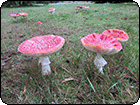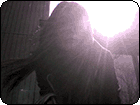 photo by splunge
photo by splunge
 photo by TheophileEscargot
photo by TheophileEscargot
 photo by Kronos_to_Earth
photo by Kronos_to_Earth
 photo by ethylene
photo by ethylene
Comment Feed:
♦ RSS
kids experience them as mythologies more than as stories—the narrative sweep is, curiously, the least significant part of their appeal. When kids talk about movies, it’s usually the cool parts that get highlighted. (“So there’s this, like, cool part where the guy—the blue guy?—has to tame, like, a flying dinosaur and they’re all on a cliff and he says, like, ‘How do I know which one is mine?’ And, so, the blue girl is, like, ‘He will try to kill you!’ ”) Readers of the Eragon books don’t relate cool incidents; they relate awesome elements. You hear about the Elders, the dragon riders, the magical fire-sword Brisingr; what drags readers in is not the story but the symbols and their slow unfolding. The sheer invocation of a mythology casts a deeper spell than putting the mythology on its feet and making it dance. If you talk to an Eragon reader, you will see why the introductory seven-page synopsis of the mythology is necessary. The synopsis is the story.